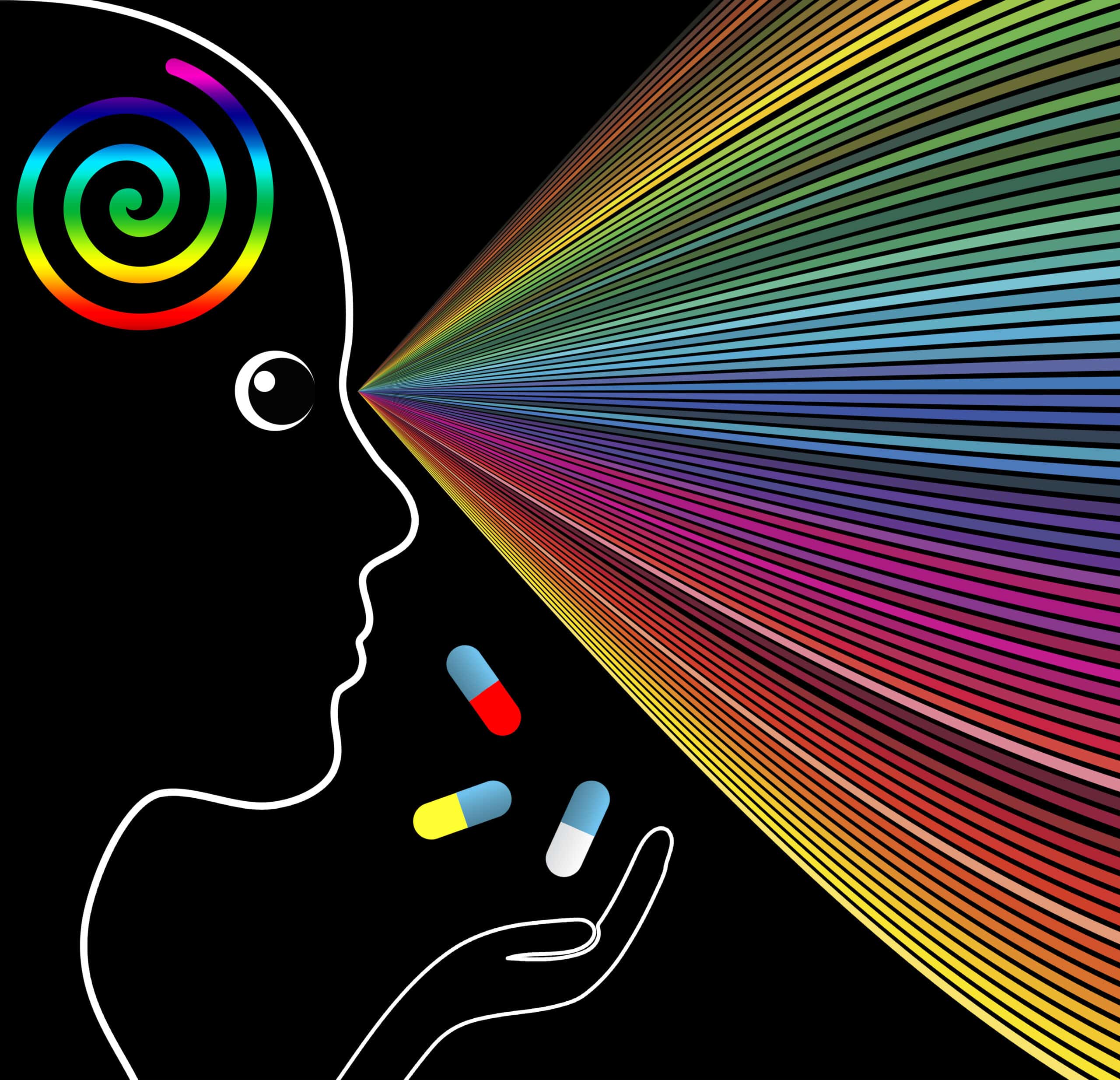Many psychiatric drugs target the 5-hydroxytryptamine 2A receptor (5-HT2AR) in neurons. These include psychedelics such as lysergic acid diethylamide (LSD), antipsychotics, and certain drugs that promote neural network growth and reorganization. Evidence suggests that psychedelic drugs may help to treat depression, post-traumatic stress disorder, and substance use disorder. But these drugs also have hallucinogenic effects. It hasn’t been clear if their therapeutic effects could be separated from their hallucinogenic effects.
Compounds that bind to 5-HT2AR exert their effects by changing the receptor’s shape. Different changes have been associated with different effects. Researchers led by Drs. Lin Tian and David Olson at the University of California, Davis, developed a light-emitting version of the receptor called psychLight that can help detect these changes in real time and in living organisms.
Development of psychLight was funded in part by NIH’s BRAIN Initiative, National Institute of General Medical Sciences (NIGMS), and National Institute of Mental Health (NIMH). The work was described in Cell on April 28, 2021.
To create psychLight, the researchers inserted the code for a green fluorescent protein into a copy of the human 5-HT2AR gene. When produced in human kidney cells, the protein’s fluorescence got brighter in the presence of hallucinogenic drugs. The researchers also tested psychLight with non-hallucinogenic compounds that resemble hallucinogens. An example is lisuride, a drug used for treating Parkinson’s Disease. Lisuride resembles LSD and binds to 5-HT2AR but does not cause hallucinations. Neither lisuride nor any of the other non-hallucinogenic compounds increased psychLight fluorescence. This showed that psychLight could discriminate between hallucinogenic and non-hallucinogenic drugs. PsychLight’s sensitivity to drugs correlated with the drugs’ ability to induce hallucinations in humans.
The researchers then used psychLight to screen a set of potential 5-HT2AR-binding compounds whose hallucinogenic potential was unknown. To verify the results, they also administered the drugs to mice. Hallucinogenic drugs that bind to 5-HT2AR produce a rapid side-to-side head movement in mice. Compounds identified as hallucinogenic by psychLight also produced this head-twitch response. Compounds identified as non-hallucinogenic did not. One of the non-hallucinogenic compounds the researchers identified, AAZ-A-154, had not been studied before. The researchers found that it produced rapid and long-lasting antidepressant-like effects in mice.
The team next measured psychLight fluorescence in the brains of live mice with optical fibers. The natural binding partner for 5-HT2AR is the neurotransmitter serotonin (5-hydroxytryptamine). With this setup, they were able to detect rapid, short-lived changes in serotonin levels in live, freely behaving mice.
The findings open several possibilities for future research. “This sensor allows us to image serotonin dynamics in real time when animals learn or are stressed and visualize the interaction between the compound of interest and the receptor in real time,” Tian says. This can help scientists better understand the role of serotonin in brain function.
PsychLight could aid in identifying hallucinogenic designer drugs of abuse and also help identify therapeutic drugs that target 5-HT2AR without hallucinogenic effects. “One of the problems with psychedelic therapies is that they require close guidance and supervision from a medical team,” Olson says. “A drug that doesn’t cause hallucinations could be taken at home.”




